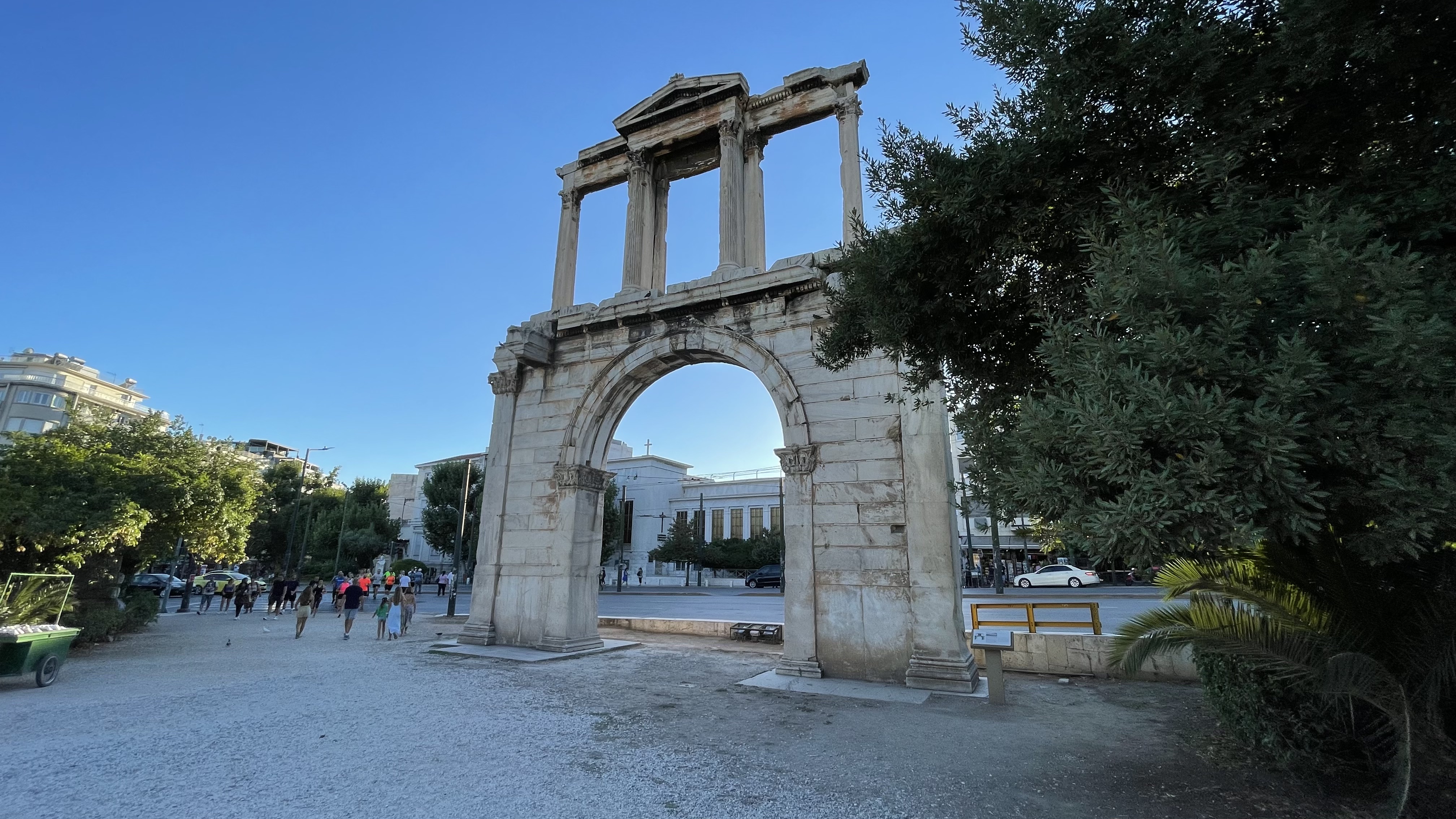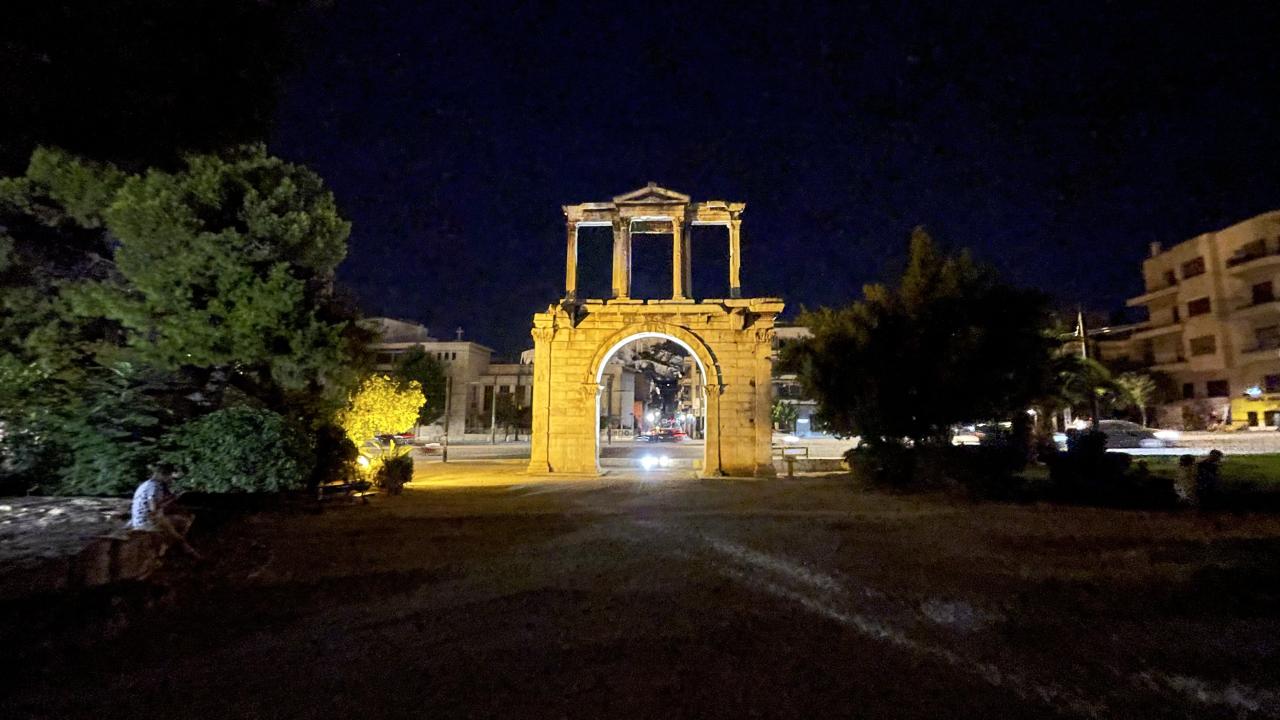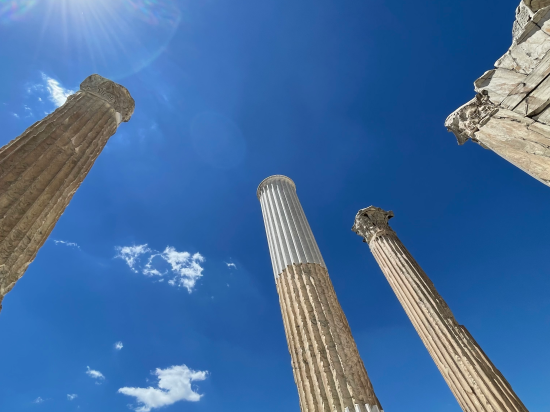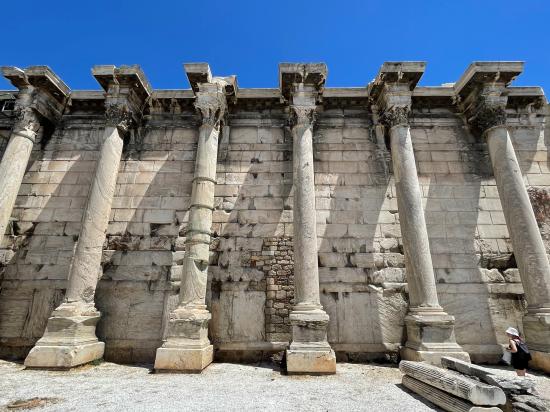The Arch of Hadrian
Hadrian's obsession with all Greek made him renovate dilapidated monuments and add plenty of new ones. The Athenians were grateful and granted him citizenship and made him archon. So don't believe Hollywood any depiction of a Roman noble before 117 CE. Well, Nero tried to grow himself a beard, but it was a rather akward and rather shabby attempt of an (adolescent) beard. Not a philosopher's beard in any case. Hadrian's adoptive father and successor Trajan was as clean shaven as his youthful Bithynian lover.
In general, getting a shave was a public matter and part of the "see and be seen" tactic of every political person, so to speak every male person of the Roman nobility.
Becoming citizen of a greek poleis was an almost impossible feat to achieve and becoming a magistrate was never seen before, in particular for a Roman barbarian. And that's what the Greeks secretly thought of the Romans, despite having been conquered by them for almost 300 years. But who would be brave enough to pass it on to the most powerful man in this part of the world. And Hadrian really did love the Greeks.

The Arch of Hadrian is a famous monument located in the city of Athens, Greece. It was built in honor of the Roman Emperor Hadrian in the 2nd century AD, and served as a symbolic gateway between the old and new parts of the city.
The arch features two large pillars with Corinthian-style capitals, and a central archway that is topped with a large decorative medallion. On the eastern side of the arch, there is an inscription that reads "This is Athens, the ancient city of Theseus," while on the western side there is an inscription that reads "This is the city of Hadrian, not of Theseus."
The arch is made from Pentelic marble and measures approximately 18 meters high, 13 meters wide, and 2.3 meters deep. It was originally built to separate the old city of Athens from the new Roman city that Hadrian had ordered to be built to the east of the Acropolis. Today, it is a popular tourist attraction and one of the most well-known landmarks in Athens.
The arch is one of the many sighs you can see and not pay any entry fees. It has been raised in honor of Hadrian during his visit and is also the entrance to the Olympieion – the Temple of Olympic Zeus – one of the biggest temples of ancient Greece, easily rivaling the Temple of Artemis in Ephesos. This arch or gate is one of many arches left by the emperor around the Mediterranean, eg in Antalya, Turkey or Jerash, Jordan.
Why are there so many arches in his honor? First, because he really loved everything Greek and wanted to leave his footprints in the Eastern provinces of the Roman Empire and add to the glory. And second, he spent many years of his reign traveling his domain and settling local and regional issues. No emperor before or after him was traveling as much as Hadrian and the places he was visiting were almost obliged to erect monuments in his honor.




